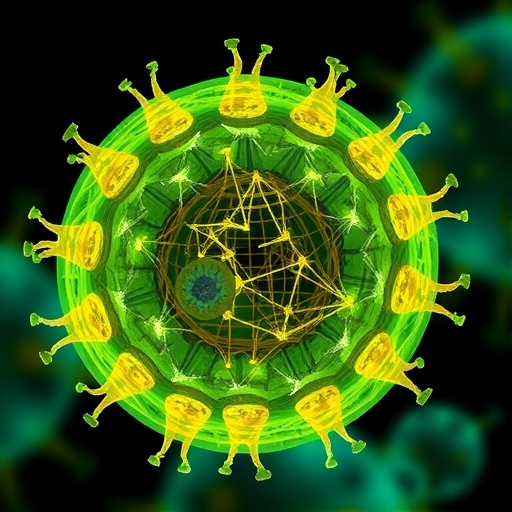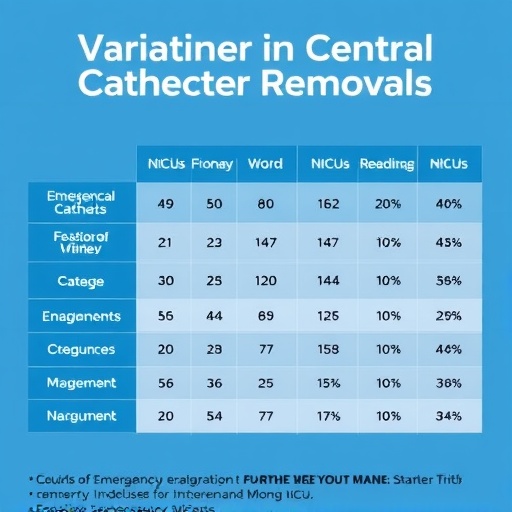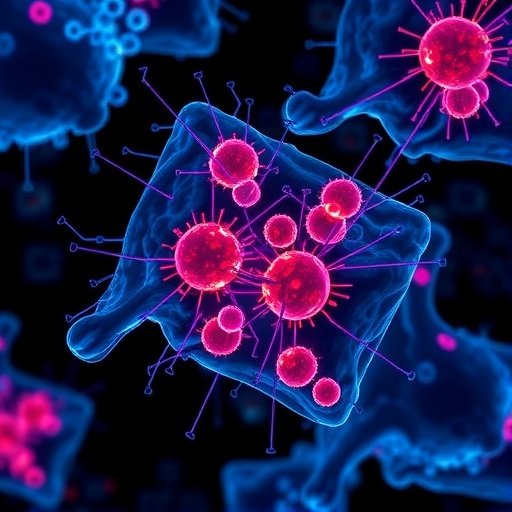In recent years, the landscape of pediatric acute kidney injury (AKI) detection and prediction has experienced a transformative shift, spurred by the integration of novel biomarkers and the burgeoning capabilities of artificial intelligence (AI). The challenge of accurately diagnosing and forecasting AKI in children has historically hampered timely interventions, contributing to long-term morbidity and mortality. However, the convergence of biochemical innovations and computational analytics heralds a new era where early identification and nuanced risk stratification are not only feasible but increasingly precise.
Acute kidney injury, characterized by a sudden decline in renal function, poses a significant threat to pediatric patients, particularly those in critical care settings. Its multifactorial etiology complicates diagnostic clarity, with traditional markers such as serum creatinine often lagging behind actual kidney damage. This diagnostic delay has underscored the urgency for improved detection methods. Advances in biomolecular research have yielded a spectrum of novel biomarkers, each offering unique insights into kidney stress, injury, and repair mechanisms. These biomarkers, detectable in blood and urine, enable clinicians to ascertain renal impairment with unprecedented sensitivity and specificity.
Among these promising biomarkers, neutrophil gelatinase-associated lipocalin (NGAL), kidney injury molecule-1 (KIM-1), and interleukin-18 (IL-18) have emerged as frontrunners. NGAL, for instance, exhibits rapid upregulation following tubular injury, often before conventional clinical signs manifest. Similarly, KIM-1 reflects proximal tubular epithelial cell damage, providing a direct window into pathological renal processes. IL-18, a pro-inflammatory cytokine, adds a dimension of immune response characterization, helping to differentiate between inflammatory and ischemic causes. The multiplex use of these biomarkers, combined with emerging candidates, constructs a multifaceted profile of renal health in pediatric patients.
.adsslot_07IuaOKbif{ width:728px !important; height:90px !important; }
@media (max-width:1199px) { .adsslot_07IuaOKbif{ width:468px !important; height:60px !important; } }
@media (max-width:767px) { .adsslot_07IuaOKbif{ width:320px !important; height:50px !important; } }
ADVERTISEMENT
Nevertheless, the challenge remains not only to detect AKI early but also to predict its trajectory and severity. This is where artificial intelligence intersects compellingly with biomarker data. Machine learning algorithms, trained on vast datasets encompassing clinical, biochemical, and demographic variables, are now being developed to identify subtle patterns imperceptible to human analysis. These computational models can stratify patients by risk, forecast disease progression, and assist in tailoring personalized therapeutic strategies, thus embodying the tenets of precision medicine.
The implementation of AI-driven diagnostic tools in pediatric nephrology necessitates a sophisticated understanding of both data types and algorithmic mechanisms. Techniques such as supervised learning harness labeled datasets to teach models how specific biomarker dynamics correlate with outcomes. Unsupervised learning can uncover latent data structures, perhaps identifying novel phenotypes of AKI previously unrecognized. Deep learning, leveraging neural networks, promises even greater predictive accuracy by modeling complex nonlinear relationships inherent in biological systems. Critically, the interpretability of these models remains a focus, as clinicians require transparent reasoning behind AI-generated predictions to inform decision-making.
Integrating AI into clinical workflows entails surmounting practical hurdles, including data standardization, interoperability between electronic health records, and ensuring robust validation across diverse pediatric populations. Additionally, ethical considerations surrounding data privacy and algorithmic bias must be meticulously addressed to prevent disparities in care. Nonetheless, pilot studies have demonstrated that AI-enhanced biomarker panels can outperform traditional diagnostic criteria, reducing diagnostic latency and enabling proactive interventions.
The future trajectory of pediatric AKI detection and prediction is poised to be influenced profoundly by multi-omics approaches. Combining genomic, proteomic, and metabolomic data with established biomarkers expands the dimensional landscape of renal pathophysiology, offering a comprehensive molecular fingerprint of injury. AI algorithms, capable of synthesizing this complex data, may unlock new predictive biomarkers and therapeutic targets. This integrated strategy promises to refine AKI classification systems, moving beyond the current generic definitions towards mechanistically informed subtypes.
From a therapeutic standpoint, early and accurate AKI detection enables the timely initiation of renoprotective measures, fluid management optimization, and avoidance of nephrotoxic exposures. In pediatric critical care, where rapid physiological changes compound risk, these advantages translate to improved survival and reduced long-term sequelae such as chronic kidney disease. Moreover, predictive analytics facilitate resource allocation within healthcare systems, ensuring that high-risk patients receive intensified monitoring and interventional support.
One of the most compelling narratives emerging from recent research is the potential for AI to democratize AKI care globally. Low-resource settings, historically disadvantaged by limited access to specialized diagnostics, could leverage AI-powered point-of-care platforms incorporating biomarker assays. These innovations might bridge gaps in early disease recognition and management, improving outcomes among vulnerable pediatric populations worldwide. Efforts to develop such portable, user-friendly technologies are underway, signaling a future where equitable kidney care transcends geographic and economic barriers.
Nevertheless, the path to widespread clinical adoption encompasses rigorous validation phases and real-world efficacy studies. Prospective clinical trials assessing AI-biased diagnostic models must demonstrate not only accuracy but also tangible improvements in patient-centered outcomes. Continuous learning systems, which adapt to newly accrued data, offer promise but require vigilant oversight to maintain safety and reliability. Collaborative consortia engaging clinicians, data scientists, and regulatory bodies are essential to accelerate translation from bench to bedside.
As this field evolves, education and training will play pivotal roles in equipping healthcare providers with AI literacy and biomarker knowledge. Interdisciplinary curricula integrating nephrology, bioinformatics, and data science will foster a new generation of practitioners adept at leveraging cutting-edge tools. Patient engagement and communication remain equally paramount; transparency about AI’s role in care processes will build trust and acceptance among families navigating the complexities of pediatric illness.
In conclusion, the intersection of advanced biomarkers and artificial intelligence represents a paradigm shift in pediatric acute kidney injury detection and prediction. This synergy offers unprecedented opportunities to enhance diagnostic precision, optimize therapeutic timing, and ultimately improve clinical outcomes. While challenges persist, the collaborative spirit of scientific inquiry coupled with rapid technological advancements brings us closer to a future where pediatric kidney injury is identified and mitigated before irreversible damage ensues. This transformative progress not only reshapes nephrology but also exemplifies the broader potential of AI-human partnerships in medicine.
Subject of Research: Pediatric Acute Kidney Injury Detection and Prediction
Article Title: Advances in pediatric acute kidney injury detection and prediction: biomarkers and artificial intelligence
Article References:
Kuok, M.C.I., Chan, W.K.Y. Advances in pediatric acute kidney injury detection and prediction: biomarkers and artificial intelligence.
World J Pediatr (2025). https://doi.org/10.1007/s12519-025-00965-9
Image Credits: AI Generated
DOI: https://doi.org/10.1007/s12519-025-00965-9
Tags: AKI biomarkers in childrenartificial intelligence in nephrologybiochemical markers for renal impairmentcomputational analytics in healthcareearly detection of kidney injuryinnovative diagnostics for AKIinterleukin-18 and kidney healthkidney injury molecule-1neutrophil gelatinase-associated lipocalinpediatric acute kidney injuryrenal function assessment in pediatricsrisk stratification in pediatric AKI





